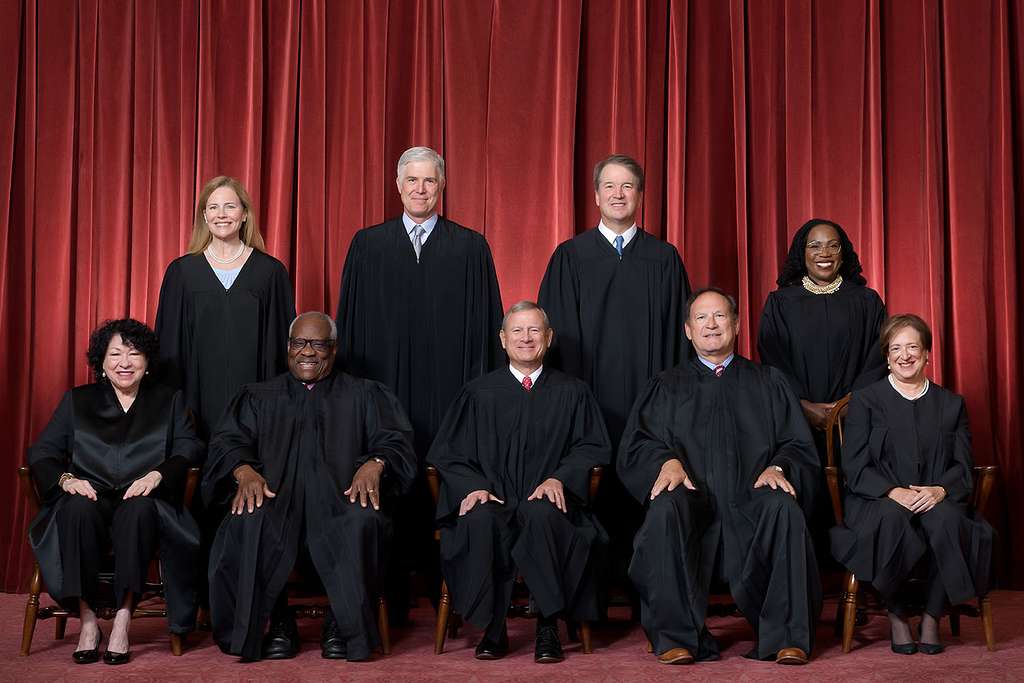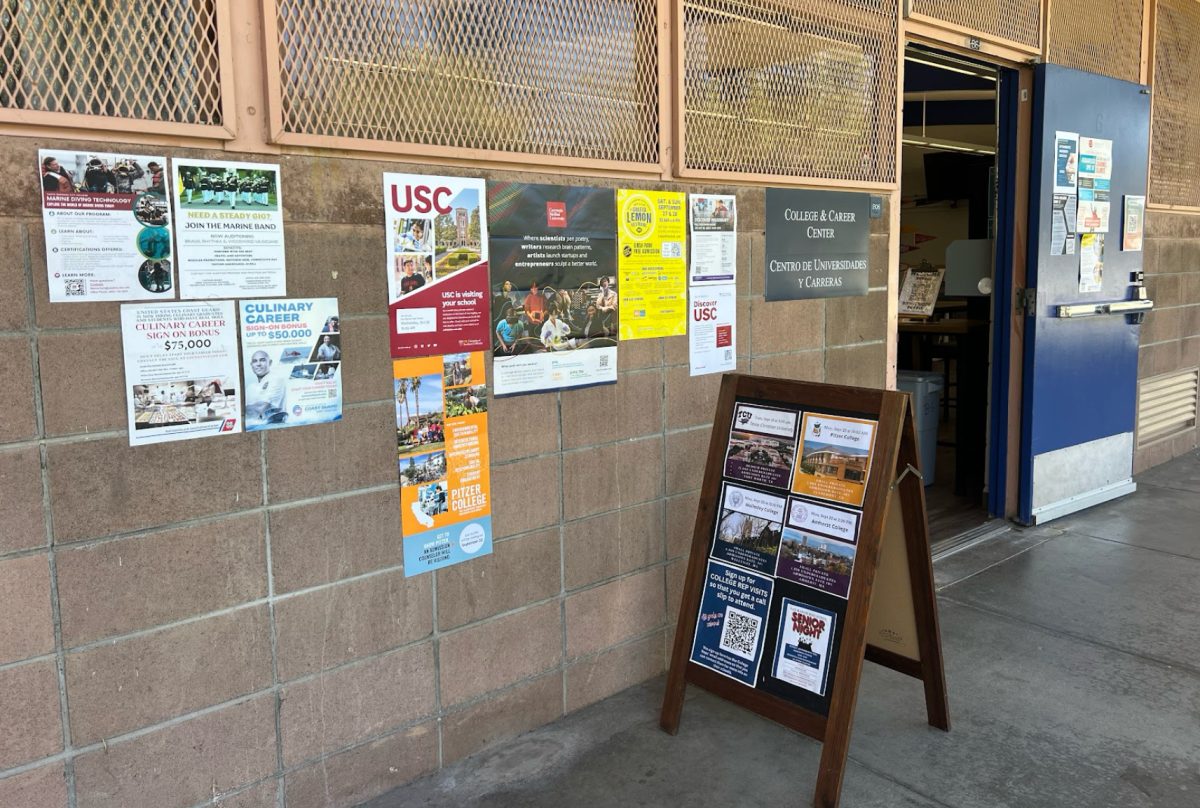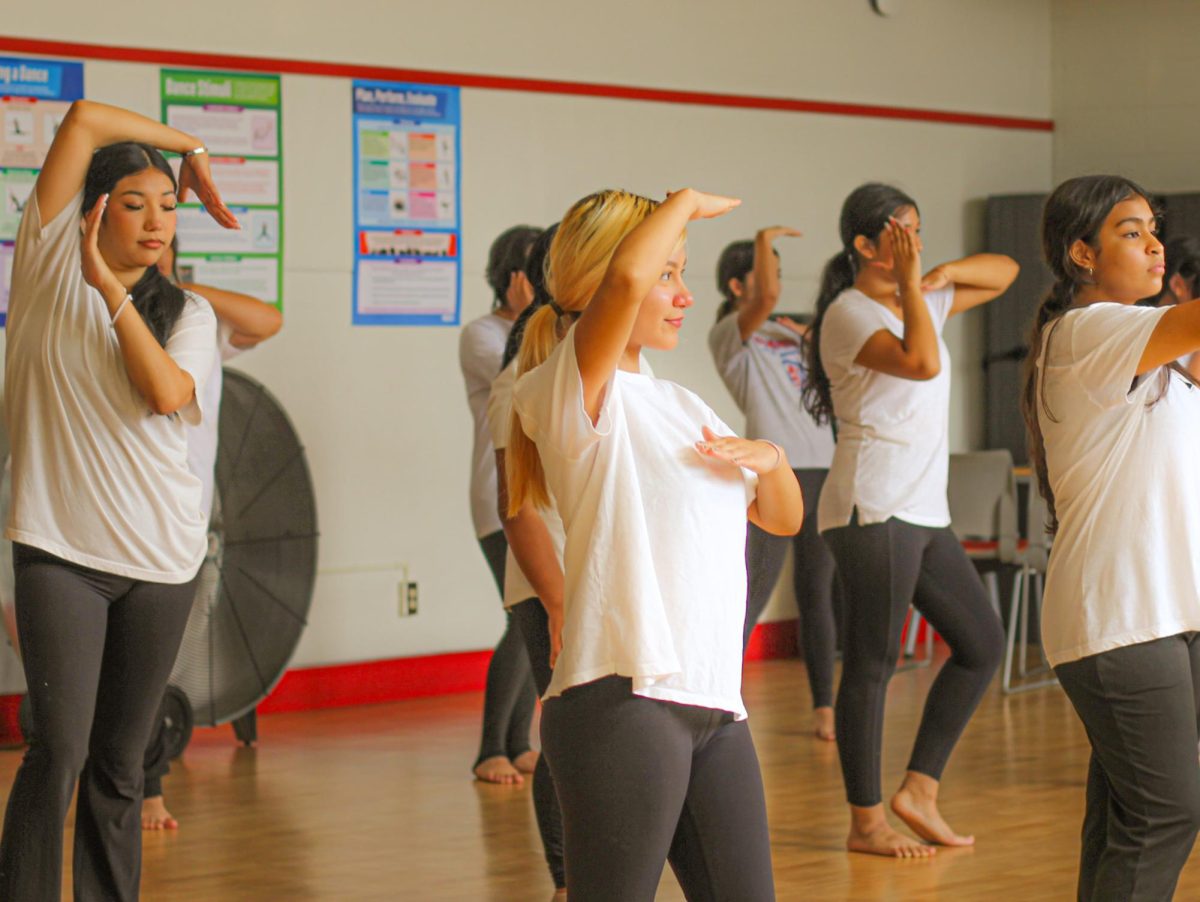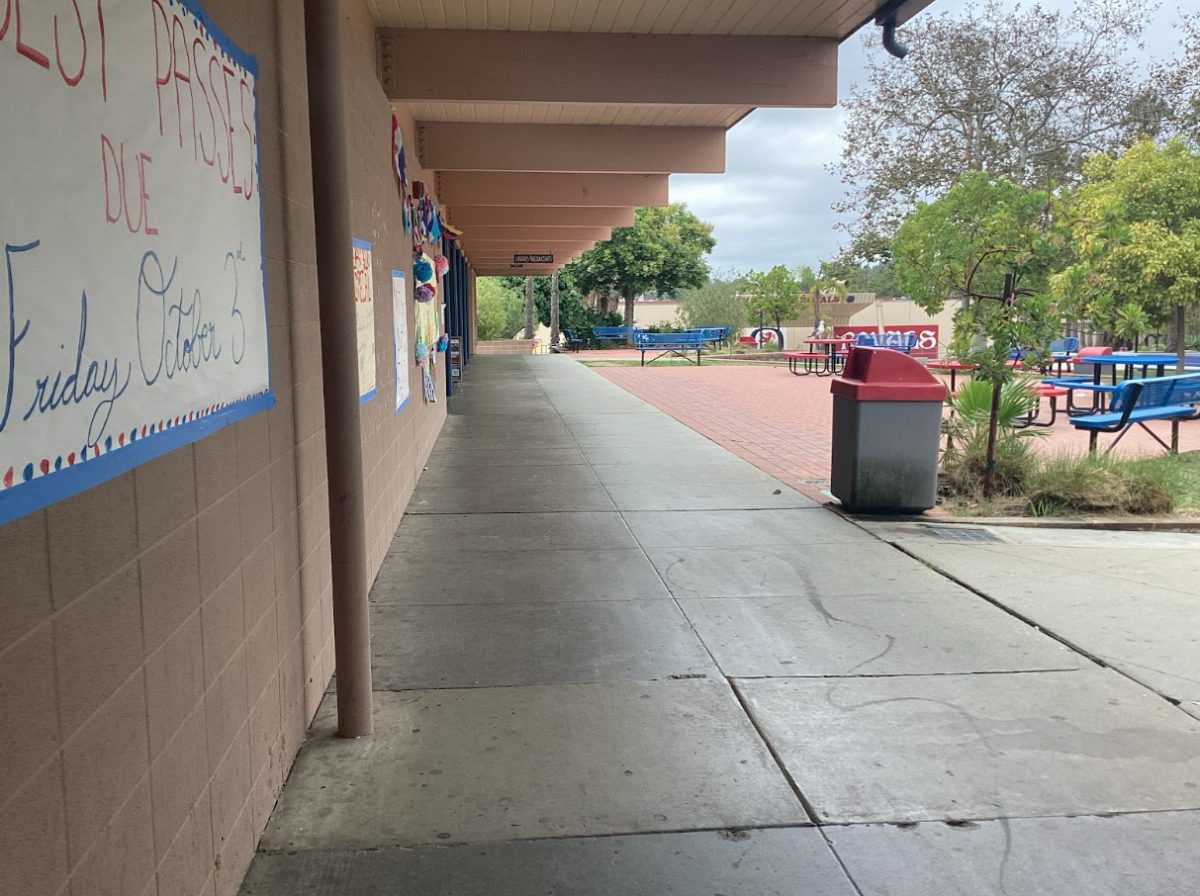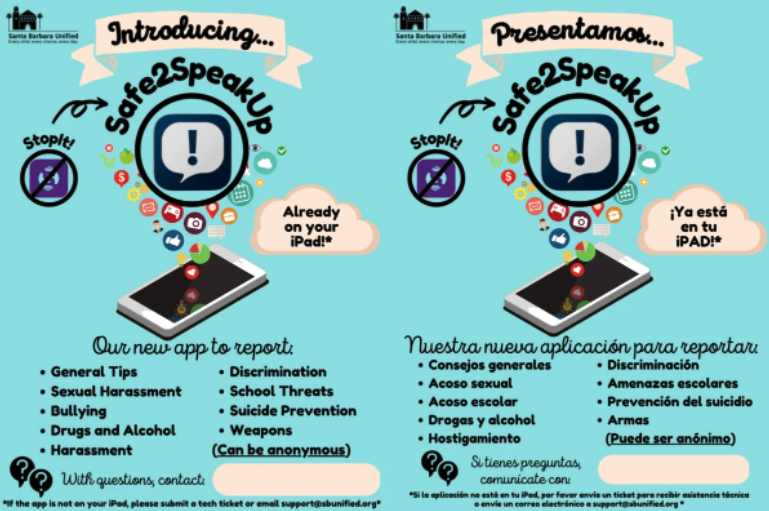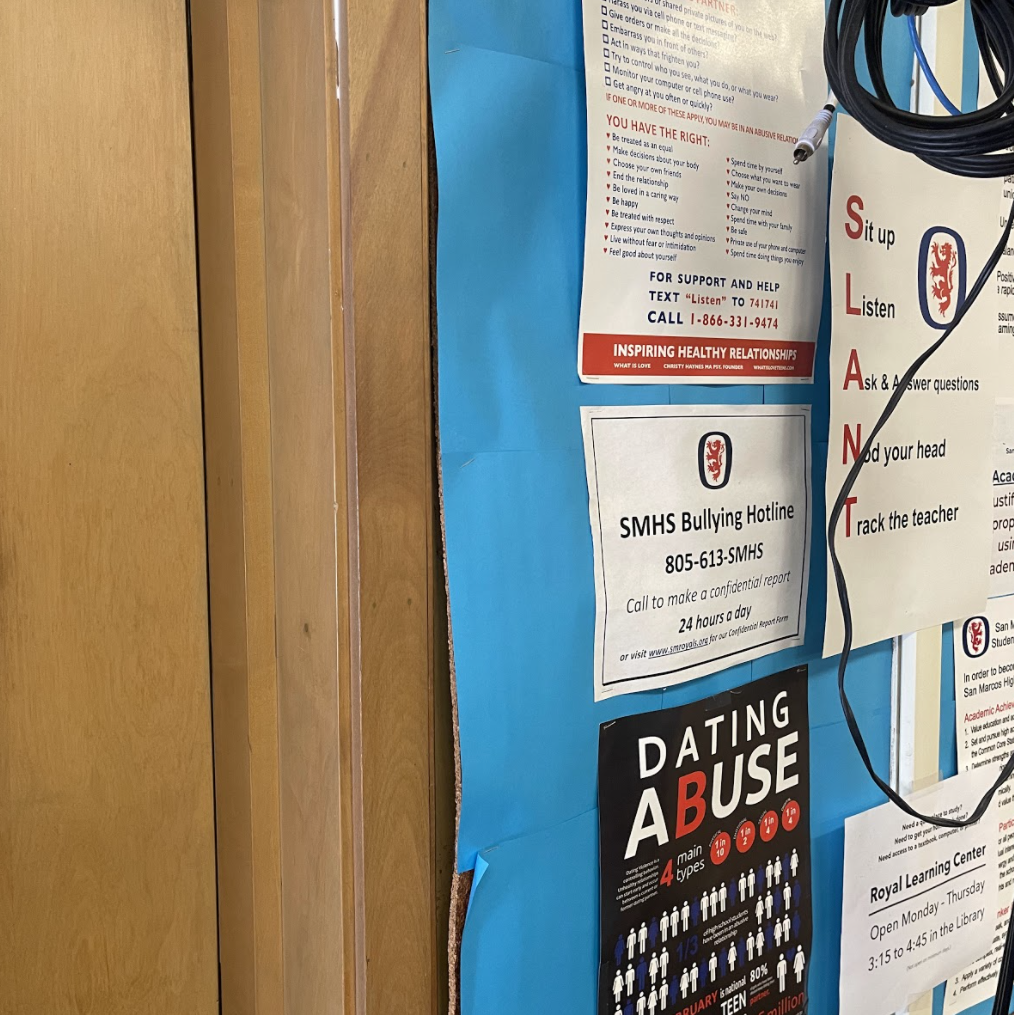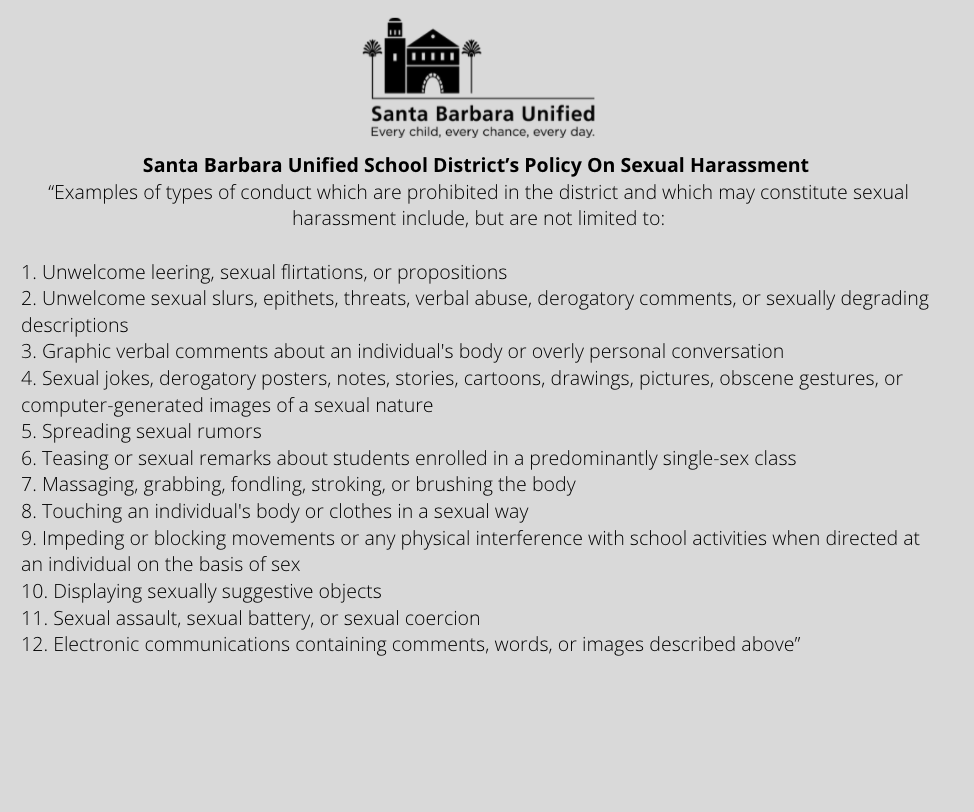Content Warning: Descriptions of sexual harassment and mentions of sexual assault as found in Title IX, California’s Education Code, and the Santa Barbara Unified School District’s Board Policies.
You should not have to read this. Sexual harassment on school campuses should not be as prevalent as it is with a 50% uptick in sexual violence incidents being reported at schools from 9,600 in the 2016-17 school year to nearly 15,000 in the 2017-18 school year, as released in a report by the U.S. Department of Education in 2020 (Edweek.org). You should not be reading this with the intention that you could very well need this information at some point during your time at San Marcos High School to protect and advocate for yourself and your friends and family. You should not be reading this because once, you needed this information and wish you had had it back then. And yet, either or both reasons are probably why you are reading this. I am sorry if that is the case.
What follows is a step-by-step process of reporting sexual harassment at this high school.
Let’s say you’re telling a trusted adult on campus — a teacher, a counselor, a coach, to name some examples — that another person on campus has sexually harassed you or your peers.
“There is so much more that I wish I could do. For example, I wish consent was better taught,” SMHS Spanish teacher Ms. Heenan shared. “But the thing I can do is make sure students have a trusted adult on campus or off campus.”
The adult you confide in, as long as they are employed by the school and not legally required to maintain confidential communications such as a personal counselor, is required to report the sexual harassment allegation to school administration (eg. your principal or assistant principal). Within 10 business days after receiving a report containing the words “sexual harassment,” school administration is legally required to launch a Title IX investigation if the alleged sexual harassment occurred within the previous 180 days (an extension of up to 90 days can be given by the Superintendent following a written account of the reasons for and a request of the extension).
Title IX Defined
Title IX, in place to combat gender discrimination in educational settings, addresses sexual harassment, “the biggest form of gender discrimination” according to Santa Barbara City College’s Title IX and Gender Equity Coordinator Linda Dozer. In addition to her current position, Dozer previously worked as an FBI agent and lawyer.
“Part of the new Title IX law — the importance of it — is that the procedures were designed to protect the rights of both a victim or survivor, who is known as a complainant [for Title IX investigation purposes], and also someone who is accused, and that person is known as a respondent,” Dozer iterates. “Some of those things that are included, procedural safeguards for these individuals, include they have a right to receive notice of the allegations.”
The Investigation
During this Title IX investigation, whether you are a witness or victim, you will be called to the front office to deliver a witness statement. Know that you are allowed to have your parents or guardians or “support persons,” as described by Dozer, present when giving your statement. The school administrator in charge of investigating your case will ask you a prepared series of questions. At your school site specifically, though this is not a question explicitly mandated by Title IX, one of the prepared questions is if you feel you were sexually harassed by the respondent. After you provide verbal testimony, the school administrator investigating will ask you to write down your testimony.
Your Rights During The Investigation
Explaining the proper protocol of Title IX investigations and rights of both the complainants and respondents, Dozer said, “They have a right for supportive measures, both parties. They have a right to review evidence. They have a right to name witnesses, to provide questions to the decision-maker [to be asked of the other party]. Schools can no longer use a single-investigator model. It needs to be an investigator and a decision-maker and, if there’s a policy violation, someone that imposes discipline, and those people need to be three separate people. And of course, there’s a right to appeal. Both parties have a right to appeal.” Dozer also stated that when a formal complaint was issued to open the Title IX investigation, the report containing a summary of the evidence must be sent to both parties at least ten days before a decision is made.
What Follows The Closure Of A Title IX Investigation
Your school administrators may find that the respondent’s behavior did not violate the federal Title IX standard. Title-IX-violating sexual harassment, so specifically and narrowly defined by the U.S. Department of Education that it dismisses many students’ valid feelings and perceptions, must involve 1) school employees performing unwelcome sexual conduct toward a student with the promise of some sort of benefit to the student; 2) another student’s unwanted behavior “determined by a reasonable person to be so severe, pervasive, AND objectively offensive that it effectively denies a person equal access to the [victim’s] education program or activity”; or 3) sexual assault, domestic or dating violence, and stalking. If the Title IX investigation had or has “procedural irregularity that affected the outcome of the matter, newly discovered evidence that could affect the outcome of the matter, and/or Title IX personnel [conducting the investigation with] a conflict of interest or bias that affected the outcome of the matter,” you can appeal the findings of the case. Further, your school is only allowed to initiate mediation between the complainant and the respondent or employ restorative justice as an informal resolution to a Title IX investigation if they have voluntary, informed, and written consent from both parties beforehand.
Let’s say you do not appeal the findings of the Title IX investigation or consent to mediation or restorative justice. That does not mean it must end here with no satisfactory resolution for you.
What your school administration may tell you is that their hands are tied by the red tape of Title IX – that they are unable to discipline the respondent if the sexual harassment allegation does not meet the standards of Title IX.
What you find out on your own after independent research is that if the school decides the claims of sexual harassment do not meet the Title IX standard, they must only “dismiss those claims for purposes of Title IX but may still address the allegations in any manner the school deems appropriate under the school’s own code of conduct.” Additionally, Title IX explains that some state laws require schools to give more expansive protections in regards to sexual harassment allegations that exceed the requirements and regulations within Title IX and that Title IX does not stop a school from investigating and addressing conduct that is not encapsulated by Title IX, but is required by their state law to respond to.
Know that if your school administration closes the Title IX investigation, that they must still investigate whether the sexual harassment described is prohibited by state law and their school district’s policies and take action if the conduct violated those additional regulations.
CA Education Laws On Sexual Harassment
In the state of California, your school has an obligation to follow Section 212.5 of the California Education Code, which uses a broader definition of sexual harassment: “unwelcome sexual advances, requests for sexual favors, and other verbal, visual, or physical conduct of a sexual nature” that “has the purpose or effect of having a negative impact upon the individual’s work or academic performance, or of creating an intimidating, hostile, or offensive work or educational environment.” Your school must investigate and determine whether the same allegations, which did not meet the Title IX standard, potentially meet the standard in the California Education Code.
Santa Barbara Unified School District’s Policy On Sexual Harassment
Your school, specifically, must comply with the Santa Barbara Unified School District’s Board Policies on Sexual Harassment regardless of the decision reached in the Title IX investigation.
SBUSD Administrative Regulation 5145.7 states that:
When determining whether student conduct has violated the aforementioned SBUSD board policy, “the key is often how the conduct affected the victim’s ability to participate in school including school activities. Suffered and got lower test scores or grades, quit a team, excessive absences to avoid the perpetrator, [and] disciplinary problems because [of] acting out [following harassment] are a few common examples,” Dozer explained.
In cases where only the SBUSD board policies on sexual harassment have been violated, the school can offer counseling, academic support, and health services to the victim and, in terms of consequences for the perpetrator, can transfer them from a class or school (as allowed by law), conduct a parent/guardian conference, educate them on the impact of their conduct on others, provide “positive behavior support,” refer them to a “student success team,” deny them participation in extracurricular or co-curricular activities or other privileges (as allowed by law), and enact discipline such as suspension or expulsion (as allowed by law).
What Students Need From The SMHS Administration Moving Forward
You should not have had to read this to learn, for the first time, the policies in place to promote victims’ rights to report and have their claims properly investigated — school administration should disseminate Title IX, the California Education Code’s clause on sexual harassment allegations and the Santa Barbara Unified School District’s Board Policies on Sexual Harassment (AR and BP 5145.7) more effectively and efficiently, delivering them to us clearly and deliberately rather than submerged within 50 pages of a Student Handbook of which BP 5145.7 is mentioned on page 49.
Even after consuming the above information, delivered in quoted legalese, you may still feel you do not have a strong enough grasp on your rights when it comes to reporting sexual harassment at educational institutions. Even after hours spent researching these pieces of legislation, I know I still do not. It should be the duty of our school to properly, comprehensively, and directly educate us all on these laws and policies, making sure we all fully understand what we are entitled to demand, experience, and receive during investigations into sexual harassment allegations before the situation may arise where we need to exercise those rights.
Examples of Preventative Measures SMHS Can Institute
There is nothing within Title IX, the California Education Code, or SBUSD board policies regarding sexual harassment that would prevent San Marcos High School from administering consent workshops for all in which students learn that anything other than an enthusiastic yes is a no. There is nothing within those regulations that would prevent San Marcos High School from instituting anti-sexual-harassment training for all athletes and coaches at the beginning of each sport’s season, ensuring that everyone participating in athletics is aware of what would constitute prohibited behavior and result in disciplinary repercussions. How many more victims need to come forward before preventative measures are put into place to help there be no more?
Support And Resources Available For Survivors
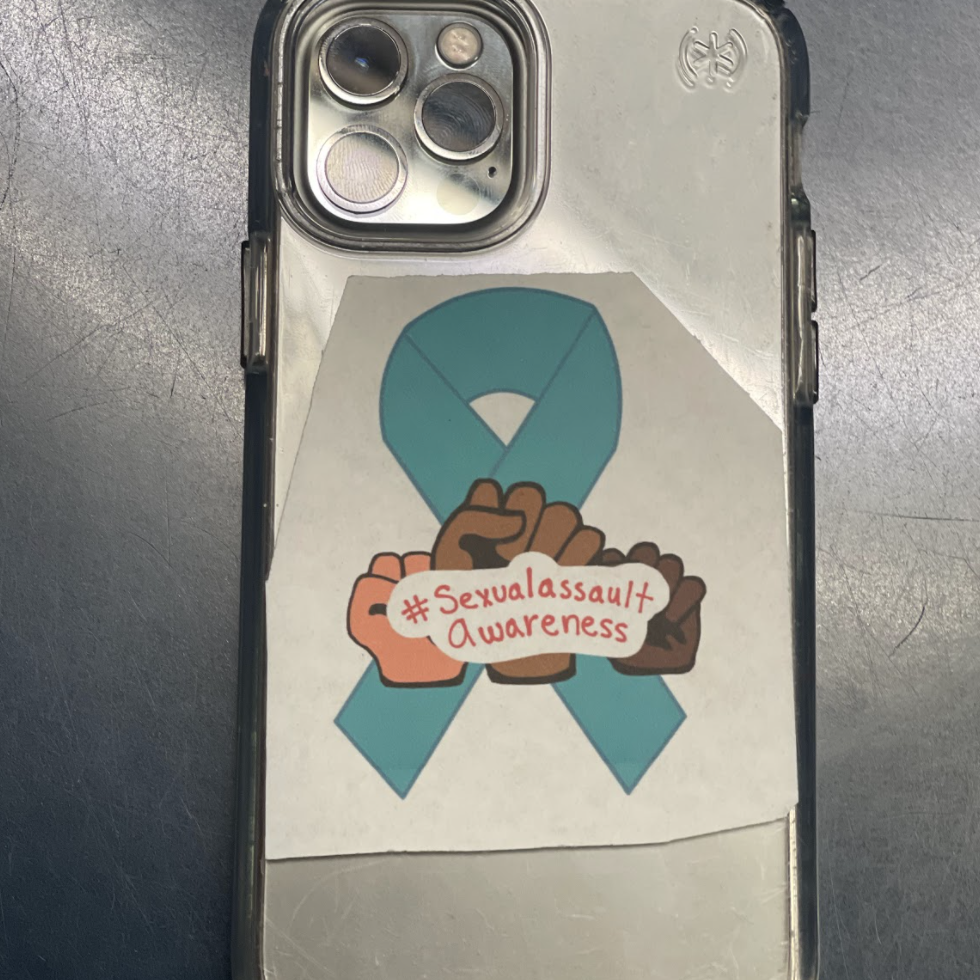
Image courtesy of SM King’s Page
Reporting sexual harassment can be emotionally exhausting, draining your energy and making you wonder if reporting to your school administration is worth the emotional toil. That question is for you to ponder and answer for yourself – regardless of the answer you arrive at, find support online through national resources for sexual assault survivors and in-person through walk-in crisis counseling provided by Standing Together to End Sexual Assault (STESA) Monday through Friday from 9 am to 5 pm at 433 E. Cañon Perdido Street, Santa Barbara, CA 93101. If you want student-run anti-sexual-harassment safe spaces on campus, you can attend the High School Students Against Sexual Assault club’s meetings, held on the first Wednesday of every month during lunch in room H4B.
“This club has been really informative and helpful,” SMHS Senior and HSSASA club member Isabela Contreras said. “Before it, I wasn’t fully aware of how common it [sexual harassment] is amongst students our age. We’ve gotten pointers on how to deal with it and the ways that we can help.”
Senior Toni Tasca, who has been part of the HSSASA club since her junior year, relayed, “We’ve had a sexual assault detective, a FBI agent, a Deputy District Attorney, a Title IX Coordinator, and speakers from survivor organizations who have provided so much important and relevant information for high school students that we just didn’t know.”
In select scenarios, another resource you can utilize on campus when you want a listening ear, but do not want to launch an investigation, is your school counselor.
“Feel comfortable in disclosing information, which can include upsetting situations and interactions, to your school counselor and have that information be confidential as long as it does not fall under the [aforementioned] regulations. We do not want to feel like we have broken your trust [in breaking confidentiality],” SMHS counselor Cesar Rodriguez explained. Your counselors can give you a referral to a Family Service Agency school-based therapist if your needs go beyond the scope of what school counselors can adequately provide.
Whether or not you report observed or experienced sexual harassment to your school and/or law enforcement, please know that you have the support of many. You are believed. You are not alone.


